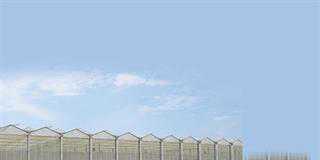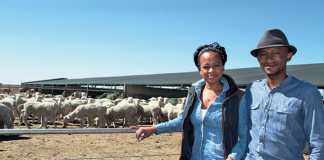These days a tangled web of national, provincial and municipal legislation determines what you may and may not do on your land. To ignore it, especially when diversifying, is not only reckless – it could lead to bankruptcy. Farmers must acquaint themselves with the legislation that most impacts on their activities. The National Environmental Management Act of 1998 (NEMA) is concerned with the prohibition, restriction or control of activities likely to have a detrimental effect on the environment.
In terms of NEMA. You may not commence with a listed activity unless you’ve received an environmental authorisation, and you may not continue with an existing facility if authorisation is refused.Authorisation – or Record of Decision (RoD) – is granted by the provincial department with the mandate to enforce the NEMA after an environmental impact study has been submitted for approval. Authorisation for an existing facility is obtained by submitting a Section 24G application to the department.
Listed activities
Listed activities can be found in the government notices GN R386 and GN R387 of 21 April 2006 (Government Gazette No. 28753). Depending on the activity, it will require either a basic assessment report or an environmental impact assessment report.Item 1 of GN R386 lists the construction of facilities or infrastructure for:
- Tourism and hospitality purposes in a protected area contemplated in the National Environmental Management: Protected Areas Act, 2003.
- Any purpose where lawns covering an area of more than 3ha, but less than 10ha, will be established. That is, horse-show arenas, soccer or polo fields, and the like.
- The slaughter of animals with a product throughput of 10 000kg or more per year.
- The concentration of animals for the purpose of commercial production in densities that exceed: 20m² per head of cattle and more than 500 head of cattle per facility per year; 8m² per sheep and more than 1 000 sheep per facility per year; 8m² per pig and more than 250 pigs per facility per year, excluding piglets not yet weaned; 3m² per head of poultry and more than 250 per facility at any time, excluding chicks younger than 20 days; 3m² per rabbit and more than 250 rabbits per facility at any time; 100m² per ostrich and more than 50 ostriches per facility per year, or 2 500m² per breeding pair; and 30m² per crocodile at any level of production, excluding crocodiles younger than six months old.
These activities typically relate to the concentration of animals in confined spaces for commercial purposes such as feedlots and farms where animals are fed to prepare them for slaughter or to produce secondary products such as eggs or milk. Item 2 lists the dredging, excavation, infilling, removal or moving of soil, sand, rock, exceeding 5m³, from a river, tidal lagoon, tidal river, lake, in-stream dam, floodplain or wetland.
Starting one of these activities without permission is very serious and the authorities have a zero-tolerance approach in these instances. Item 7 lists the above-ground storage of dangerous goods, including petrol, diesel and gas, with a combined capacity of more than 30m³ but less than 1 000m³ at any one location. So, if a farmer puts up diesel tanks on his farm and the total capacity exceeds 30m³, they are listed!
If their combined capacity exceeds 1 000m³, the activity is listed under Item 1(c) of GN R387 and requires an environmental impact assessment (instead of a basic assessment report). Item 15 lists the construction of a road that is wider than 4m or has a reserve wider than 6m. Item 16 is a tricky one and is often contravened unknowingly. It lists the transformation of undeveloped, vacant or derelict land to residential, mixed, retail, commercial, industrial or institutional use where the total area involved is larger than 1ha.
Bear in mind that the 1ha is not restricted to the actual structures you erect. It’s the “footprint” of the entire development and also includes roads, parking areas and landscaped gardens. If these, in total, exceed 1ha, the activity is listed. Item 18 lists the subdivision of land of 9ha or larger into portions of 5ha or less. If the property is less than 9ha in extent, the subdivision is not listed.
Item 19 lists the development of a new facility or the transformation of an existing facility for manufacturing processes, warehousing, bottling, packaging or storage, which, along with associated structures (such as undercover parking bays, roads and lawns), occupies an area of 1 000m² or more outside an area zoned for industrial purposes. In other words, if the activity involves manufacturing items of an “industrial” nature, such as storage units, doors, windows or farm gates, in a shed situated on a farm which is zoned “agricultural”, the activities are listed.
The items listed in GN R387 that require an environmental impact assessment are less applicable to farmers, although the following might be important:
- The construction of facilities or infrastructure (including associated structures or infrastructure) for the cremation of animal tissue covering 10ha or more is listed.
- Any development activity, including associated structures and infrastructure, where the developed area (not the whole farm) is 20ha or more, is listed.
Water use
The National Water Act of 1998 is of critical importance to farmers and smallholders. Enforced by the water affairs department, it regulates development and activities affecting watercourses through the protection of water resources and the authorisation of water-uses relating to the impeding or diverting the flow in a watercourse, as well as the altering the bed, bank and/or characteristics of a watercourse.
A “watercourse” here is a river or spring; a natural channel in which water flows regularly or intermittently; a wetland, lake or dam into which, or from which, water flows; or any body of water declared to be a watercourse by the minister. “Impeding the flow” means constructing a temporary or permanent obstruction or hindrance to the flow in a watercourse by a structure (bridge or dam wall) built either fully or partially in, or across, the watercourse.
“Diverting the flow” means a temporary or permanent structure (deflectors, bank stabilisation and/or weirs) causing the water flow to be re-routed. For the purpose of the Act, “water use” is defined as, among other things, taking water from a water source (river/dam), storing it (in a reservoir), impeding or diverting the flow of water in a watercourse, altering the beds, banks, course or characteristics of a watercourse (by excavation or landscaping), or using water for recreational purposes.These require a water-use licence, which has to be applied for and granted, before the planned activity can begin.
Don’t break the law
A number of other pieces of legislation may come into play, depending on the circumstances, but these are the main ones. Contravention of these has seen many farmers and smallholders come close to bankruptcy, with some losing their land.You might think the authorities lack the manpower to enforce the Acts, but that’s not a risk you want to take. At some stage the contravention will be discovered. Play it safe, comply with the rules and regulations, and seek legal advice if you believe you might have already contravened the law.
Contact Advocate Douw Venter of Pro Enviro on 082 562 0569 or e-mail [email protected].













